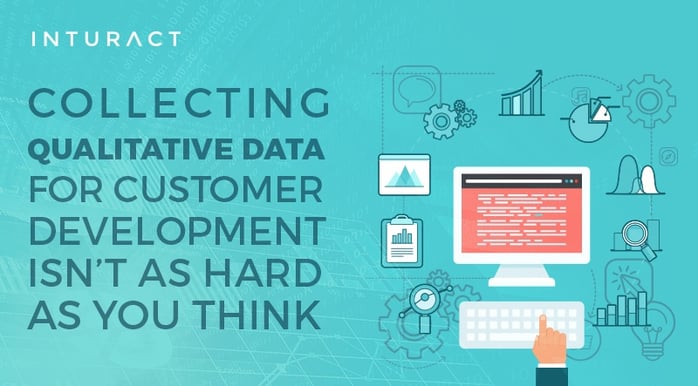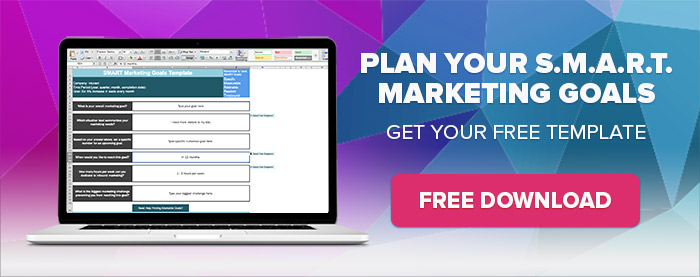
Qualitative data in the marketing world comes down to the kind of information you can only get from interacting with real people in the real world. Yes, it’s a little difficult to quantify responses to open-ended questions, especially when they’re told to you over a cup of tea, but the value of this information to startups and growing businesses should not be underestimated.
Why Qualitative?
- Agile product development.
- Customer development.
- Lean Startup methodology.
This is how new companies, and established companies creating new products, are growing intelligently and sustainably, while avoiding the pitfalls that have spelled disaster for the thousands of companies that fail each year. In fact, the Lean Startup movement, along with customer development, are in many ways a reaction to the high mortality rate we’ve seen in startups, and they gain followers by presenting solutions.
At the core of these solutions is qualitative data.
When founders collect and use the data correctly to inform their product design and marketing strategies, they can and will avoid most common pitfalls. Most importantly, they will produce a product that people need and want, finding problem/solution fit (and product/market fit too).
In The Startup Owner’s Manual by Steve Blank and Bob Dorf, the authors sum it up like this: “Startups solve customer and market risk by reading this book.” Their book is all about gathering and using qualitative data, and their list of “9 Deadly Sins” is indicative of the problems it's uniquely able to solve, including…
- Assuming “I Know What the Customer Wants”
- The “I Know What Features to Build” Flaw
- Emphasis on Execution Instead of Hypotheses, Testing, Learning and Iteration
Their four-step formula for business building aims to circumvent the dangerous assumptions that lead to startup failure, and their prescription begins with “customer discovery”.
What is Qualitative Research?
Qualitative research seeks to find information about the behaviors, needs, desires, routines, use cases, and other information on how a product might best fit into a user’s life or work, including details about emotion, personality, and other intangibles affecting purchasing decisions.
For Blank and Dorf, they recommend founders create a set of business model hypotheses for how they envision their businesses working, and physically go out and ask people in their target market for insights:
Of all the lessons of Customer Development, the importance of getting out of the building and into conversations with your customers is the most critical. Only by moving away from the comforts of your conference room to truly engage with and listen to your customers can you learn in depth about their problems, product features they believe will solve those problems, and the process in their company for recommending, approving and purchasing products.
What does this look like in practice?
It’s not hard to do.
Your goals are simple. You have to find answers to these questions:
- Do you really understand the customer’s problem, in its entirety, within their everyday context?
- Is the problem severe enough that people are highly motivated to solve it?
- Will they care enough about the problem to tell their friends?
First, you have to find the right people to ask.
You can’t gather the data from just anyone. The people with the answers you need are your ideal clients – those that have a problem or need, know they have a problem or need, are actively searching for a solution, and are willing to pay you to provide that solution. Blank and Dorf even add that the most ideal prospects are so desperate for a solution to their very painful problem that they’ve cobbled together a DIY solution in the meantime.
How many people should you ask? Start with 50 potential customers who don’t know you. Persuading them to give you some of your time is the hardest part of this process! (You can do it.) Start with asking people you know directly and ask for referrals to friends, and friends of friends.
Second, you have to designate the right person to ask the questions.
Who should conduct the interviews? The answer will probably surprise you, but more than one expert says it should be none other than the founder. Who better to find out what is needed, and who needs it, than the person driving the entire operation?
Then, you have to ask the right questions, in the right way.
You can ask your questions one-on-one, within a focus group setting, or through (totally not creepy) observation. You can even ask for qualitative data through email and surveys (though that becomes problematic, since only a self-selective group will respond, potentially skewing your results). The most important part of qualitative data is digging for the insights you wouldn’t be able to find any other way, and the best way to do that is through good, old-fashioned conversations.
Ask open-ended questions that lead you to these insights:
- How they describe their problem.
- How severe they consider the problem to be.
- How this problem affects their everyday lives.
- If they could make this problem magically go away, how would it change their lives?
DO NOT ask them what features they want in a product. Not only is this asking them to do your work for you, the average layman is really bad at product development and will lead you into the Product Death Spiral.
Use the NPS question for further insights
When you introduce your idea for a solution, ask them the Net Promoter Score (NPS)* question to get a read on their response and level of enthusiasm:
“On a scale of 1 to 10, how likely would you be to recommend this company/product/service to others?”
How do you calculate NPS? NPS is calculated by subtracting the number of customers who rate your business below a 7 from the number of customers who rate it 9 or 10. The greater the difference, the more likely your company will be to create buzz and generate referrals. Tools like Wootric let you ask the NPS question inside your application (once you’ve developed your application), so you can keep tabs on customer satisfaction on an ongoing basis.
Other useful information…
The most important characteristic of your target prospect is whether they have a problem you’re uniquely able to solve, but while you’re finding out, you may want to make notes on:
- Demographic information, such as age, gender, job title, industry, and household income.
- Personal style (this may come in handy when deciding how to design your brand/product/website).
- How they speak, what words they use – recording your conversations will give your copywriters the raw material they need to craft a compelling brand voice.
Find the common threads in the answers and use them to create a user story. It might look roughly like this:
Sample Target market: Freelancers
- Problem: Consumers hate to bill their clients each month.
- Severity: Billing stops freelancers from being able to put in more “paid” hours, reducing their overall income, and increasing stress levels (they don’t like accounting!).
- We think we can develop a program that keeps score of client charges and automatically bills for completed work.
- It will automate tracking time, or per project pricing, tally and invoice accordingly, removing all of the tedious work that takes away from creative time.
- After we succeed with the initial software, we will work on integrations with tax/accounting software programs for end-of-year reporting.
- Millions of freelancers will be able to take one big, recurring task off of their plates.*
The goal of this list is to clarify your company's vision, distilling it down into a few bullet points for your Customer Development, product development, and marketing teams to use as guidelines for growing from a Minimum Viable Product** to a successful, sustainable business.
*If anyone knows of a product that does all of these things, we know a few freelancers who’d like to hear about it.
**A Minimum Viable Product is the smallest possible group of features that will work as a stand-alone product that solves the core problem, and demonstrates the product’s value. It requires much less investment than creating a full product, and makes it easier for product development to iterate based on customer feedback.
Qualitative data isn’t just for startups
Any time you’re making a change, starting something new, or toying with the idea of adding another feature, taking the time to gather the data can help you avoid making costly mistakes – mistakes that result from assumptions.



